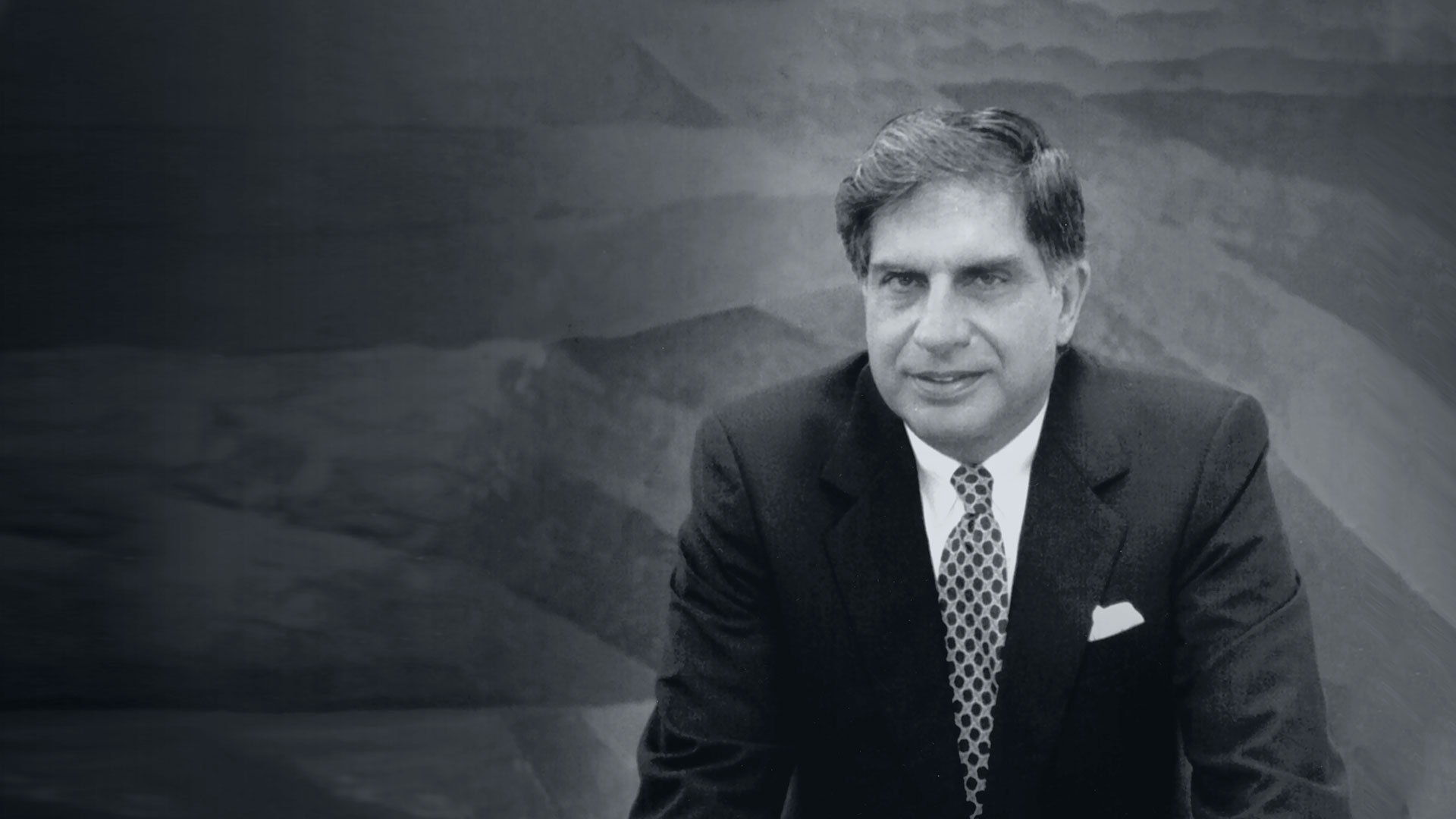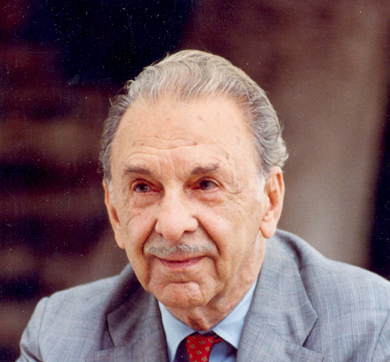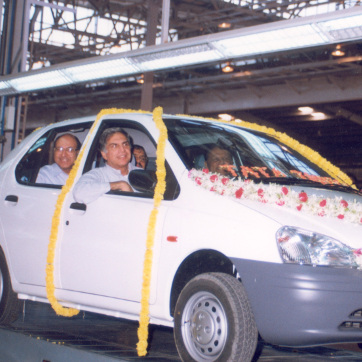2572 words | 9-minute read
There are a host of reasons why Ratan Naval Tata is worthy of admiration, none more so than for the way he has sailed through the high tide of his life as head of the Tata group: with grace and a quiet dignity all too rare in the tumult and cacophony that characterise the mostly grubby, sometimes noble intersection of business and life in today’s India.
The quietude is what sets him apart. You would expect a person such as Mr Tata, tall of stature and blessed with the typically striking looks of his Persian forbears, to stand out in a crowd. Not so the helmsman of the Tata group, whose solitary nature, humility and intense effort to shun the arch lights can make him seem almost invisible in any gathering. The rectitude and resolve behind this persona is of more consequence, though, defining as they have the shape and substance of a remarkable business conglomerate during what has been the most transformative period in its long and storied history.
Every chairman of Tata Sons — the holding company that is the fastener keeping the many disparate elements of the whole together — has left an indelible imprint on the group.
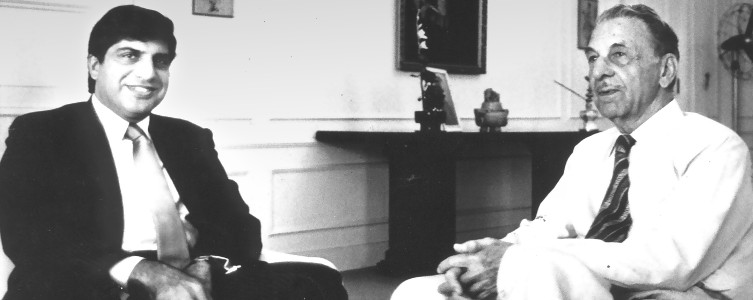
Jamsetji Tata, the founder, with his ideals and his vision laid the seeds for the flowering of the conglomerate. Dorab Tata secured his father’s legacy by realising that vision. Nowroji Saklatvala consolidated what had been created and JRD Tata, the last of the great patriarchs of Indian industry, moulded the group in his own image: benevolent, urbane and all-encompassing.
It is likely an understatement to say that Ratan Tata, who took over as chairman in March 1991, was stepping into big shoes. And he was stepping into a minefield. Less than a decade from the new millennium, the Tata group was a bloated, unevenly managed and excessively bureaucratic behemoth operating in an India that had only begun jettisoning the jargon of socialism and the shibboleths of policy-making that had promised plenty but delivered little. Worse, Mr Tata was seen by many as an interloper, with none of the charisma or the capability of the legend who had preceded him, an accidental chieftain who had ascended to the top mainly by virtue of his surname and lineage.
More than 20 years later, it can be argued without favour or prejudice that Mr Tata has changed the group for the better in more substantial a manner than any of the luminaries under whose care the organisation evolved since its inception in 1868. That he has done this while staying true to the traditions and tenets of the group — in an environment where so many have succumbed to the allure of the soft buck — make his accomplishments exemplary. By coincidence or destiny, Mr Tata’s becoming chairman got synchronised with the opening up of India’s economy. Here was the chance to fashion a new kind of organisation, to rejuvenate and recast its many enterprises to suit a radically altered business dynamic.
Mr Tata seized the day. He welcomed the opportunities that came with the death of the ‘Licence Raj’. He fortified the Tata embankments to guard against the threats that arrived in equal profusion. He embraced the prospect of taking the group to foreign shores. He made it more cohesive, introduced fresh thinking, fostered innovation, and sparked in his charges an appetite for calculated risk-taking that appears, in hindsight, truly extraordinary.
In doing this and more, Mr Tata has buried forever talk of not being the right person for the chairmanship — a post he had never been groomed for, had never solicited, or even thought himself fit to occupy. The Tata group was not, after all, part of the future Ratan Tata had set out to touch as a teenager.

Born to Naval and Soonoo Tata on December 28, 1937, Mr Tata and his younger brother, Jimmy, were brought up by their grandmother, Navajbai R Tata, in a baroque manor called Tata Palace in downtown Bombay [now Mumbai]. Life was luxurious (the young Ratan was driven to school in a Rolls-Royce) but Lady Navajbai, a formidable matriarch, instilled a strong set of values in her grandchildren. “She was very indulgent, but also quite strict in terms of discipline.” Mr Tata would recall in one of those rare interviews where he opened up about his growing-up years: “We were very protected and we didn’t have many friends. I had to learn the piano and I played a lot of cricket.”
Mr Tata was schooled at Campion and then at Cathedral and John Connon (both in Bombay), where he spent the last three of his schooling years. Already, he was well on his way to becoming the person he is today. Speaking to an excited bunch of pupils at Cathedral and John Connon in March 2009, he said: “I was shy [back then]. One thing I have never recovered from is a fear of public speaking. The only people speaking publicly in school were those reading out the sermon at assembly and those participating in debates. I wasn’t among either. Nor was I into too many extracurricular activities... I particularly remember a mathematics teacher who, I felt, was determined that I never complete school. He almost succeeded.”
Finish with school he did and then it was on to Cornell University in the United States, a nation and a state of mind that Mr Tata would fall in love with. Cornell, where he studied architecture and structural engineering, and those years in America from 1955 to 1962 would influence Mr Tata tremendously. It was, in multiple ways, the making of him. He travelled the country and got so charmed by California and that West Coast lifestyle he was ready to settle down in Los Angeles.
The spell was broken when Lady Navajbai’s health deteriorated. Mr Tata was forced to return to a life he thought he had left behind. “I was in Los Angeles and very happily so. And that was where I was when I left before I should have left,” Mr Tata would say in a 2011 interview with CNN.
Now back in India, Mr Tata had a job offer from IBM. JRD Tata wasn’t amused. “He called me one day and he said you can’t be here in India and working for IBM. I was in [the IBM office] and I remember he asked me for a resume, which I didn’t have. The office had electric typewriters so I sat one evening and typed out a resume on their typewriter and gave it to him.”
And that was how Mr Tata came to be offered a job, in 1962, with Tata Industries, the promoter company of the group (he would go on to spend six months at Telco, now called Tata Motors, before joining Tisco, now Tata Steel, in 1963).
Back at Cornell, Mr Tata had spent his initial two years studying engineering, in deference to his father’s wishes rather than any real inclination on his part. Then he made the switch to architecture — “much to my father’s consternation” — though he would go on, incredibly enough, to complete both courses in under seven years.
Unlike his eldest son, Naval Tata was a gregarious and outgoing personality, equally at home in the company of kings and commoners. He became a director of Tata Sons, an eminent figure in the International Labour Organisation and a well-regarded sports administrator. Between father and son, though, the difference in temperament showed. “We were close and we were not,” Mr Tata would write in a special publication that celebrated the lives of Jamsetji Tata, JRD Tata and Naval Tata. “I left India when I was 15 for a decade. I would have to say that, as often happens between a father and a son, there was, perhaps, a divergence of views.
“[My father] hated confrontations. He was very good at negotiating settlements... Frequently, that settlement would involve a compromise, and he was all for ‘give and take’. As a person, he gave in a great deal and sometimes, as younger and less mature people, we would fight with him for conceding ground in the quest for a solution, for peace or whatever.”
Some of that need for conciliation and cooperation, that concern for people and their feelings, is certainly in Mr Tata’s genes too. The memories of those who shared the shop floor with him at Tata Steel in Jamshedpur attest to that truth. And those qualities of caring were also evident when he became the director of National Radio and Electronics (or Nelco, as it was better known), his maiden independent leadership mission.
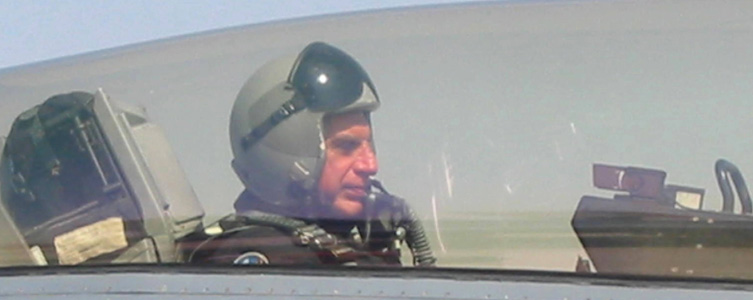
The battles that Mr Tata had to fight to establish his control over the group following the passing away of JRD in 1993 has been told often. What has attracted little comment has been the decency that Mr Tata displayed in the face of the flak that was fired at him.
That has been, and continues to be, the Ratan Tata style: to do it his way and peace be with the world. It can seem at times that Mr Tata preserves the integrity of his disdain for unfounded criticism by pickling it in silence.
That may be an appropriate response in an age where, as one business commentator put it, “poverty, paranoia and financial illiteracy have combined into a dangerous brew — one that has made economic virtuosity look suspiciously like social vice”.
His training as an architect may have something to do with Mr Tata’s preference for deeds over words. Architecture, that “inescapable art”, is nothing if not an expression of worth through work, a medium that inevitably suffers when explained in writing or speech.
As he says often, architecture has provided him with the equipment to be a perceptive business leader. Pity is, Mr Tata has had only a handful of opportunities to use that equipment in the discipline proper, a house he designed for his mother, an abode in Alibaug and his own seafront home in Mumbai being the most prominent of these.
Mr Tata has had a bit more time for his other desires. Flying and fast cars, both of them, like so much else, born in the Cornell cauldron, have been enduring passions. As was scuba diving till his ears could take the pressure no more.
A teetotaller and a nonsmoker, Mr Tata has consciously chosen to stay single. That seems so much like the man: a lonesome warrior wedded to the Tata cause. The company he keeps in his book-lined abode in Mumbai is his German Shepherds, Tito and Tango, and his fondness for them has always been boundless.
Too many of these pets of Mr Tata have been snatched away by death and the loss has taken its toll, but he is not quite ready to give up on the chance to bond with yet another loyal bounder. “My love for dogs as pets is ever strong and will continue for as long as I live,” he said in a recent interview with Tata Review.
“There is an indescribable sadness every time one of my pets passes away and I resolve I cannot go through another parting of that nature. And yet, two-three years down the road, my home becomes too empty and too quiet for me to live without them, so there is another dog that gets my affection and attention, just like the last one.”
That’s distinctively Mr Tata, a leader and an individual not afflicted by the curse of certainty.
That may be why his explanations on any issue or subject are punctuated frequently with words such as perhaps, probably and possibly (it puts him in the same league as the writer and rhetorician Christopher Hitchens, who when asked which word he had most overused, said it was “perhaps”).
What Mr Tata has been definite about is the need for him to step aside and let a new generation navigate the Tata ship. Now there will be other frontiers to find and interests to be pursued.
“He owns less than 1 percent of the group that bears his family name. But he is a titan nonetheless: the most powerful businessman in India and one of the most influential in the world,” stated The Economist in a 2011 profile of Mr Tata. Ageism cannot keep still a person such as that.
“There are some things which cannot be learned quickly, and time, which is all we have, must be paid heavily for their acquiring,” said Ernest Hemingway. “They are the very simplest things, and because it takes a man’s life to know them, the little new that each man gets from life is very costly and the only heritage he has to leave.”
What Ratan Tata has learned and passed on, and what his triumphs and his conduct reveal — that surely will be his legacy.
His Life, His Times:
- 1937: Ratan Tata is born to Soonoo and Naval Tata.
- 1955: Leaves for Cornell University (Ithaca, New York, USA) at age 17; goes on to study architecture and engineering over a seven-year period.
- 1962: Awarded bachelor of architecture degree.
- 1962: Joins the Tata group as an assistant in Tata Industries; later in the year, spends six months training at the Jamshedpur plant of Tata Engineering and Locomotive Company (now called Tata Motors).
- 1963: Moves to Tata Iron and Steel Company, or Tisco (now called Tata Steel), at its Jamshedpur facility for a training programme.
- 1965: Is appointed technical officer in Tisco’s engineering division.
- 1969: Works as the Tata group’s resident representative in Australia.
- 1970: Returns to India, joins Tata Consultancy Services, then a software fledgling, for a short stint.
- 1971: Is named director-in-charge of National Radio and Electronics (better known as Nelco), an ailing electronics enterprise.
- 1974: Joins the board of Tata Sons as a director.
- 1975: Completes the Advanced Management Program at Harvard Business School.
- 1981: Is appointed Chairman of Tata Industries; begins the process of transforming it into a promoter of high-technology businesses.
- 1983: Drafts the Tata strategic plan.
- 1986-1989: Serves as Chairman of Air India, the national carrier.
- March 25, 1991: Takes over from JRD Tata as Chairman of Tata Sons and Chairman of the Tata trusts.
- 1991: Begins restructuring of the Tata group at a time when the liberalisation of the Indian economy is underway.
- 2000 onwards: The growth and globalisation drive of the Tata group gathers pace under his stewardship and the new millennium sees a string of high-profile Tata acquisitions, among them Tetley, Corus, Jaguar Land Rover, Brunner Mond, General Chemical Industrial Products and Daewoo.
- 2008: Launches the Tata Nano, born of the trailblazing small car project he guided and commanded with zeal and determination.
- 2008: Is awarded the Padma Vibhushan, the country’s second-highest civilian honour, by the Government of India.
- December 2012: Steps down as Chairman of Tata Sons after 50 years with the Tata group; is appointed Chairman Emeritus of Tata Sons.

